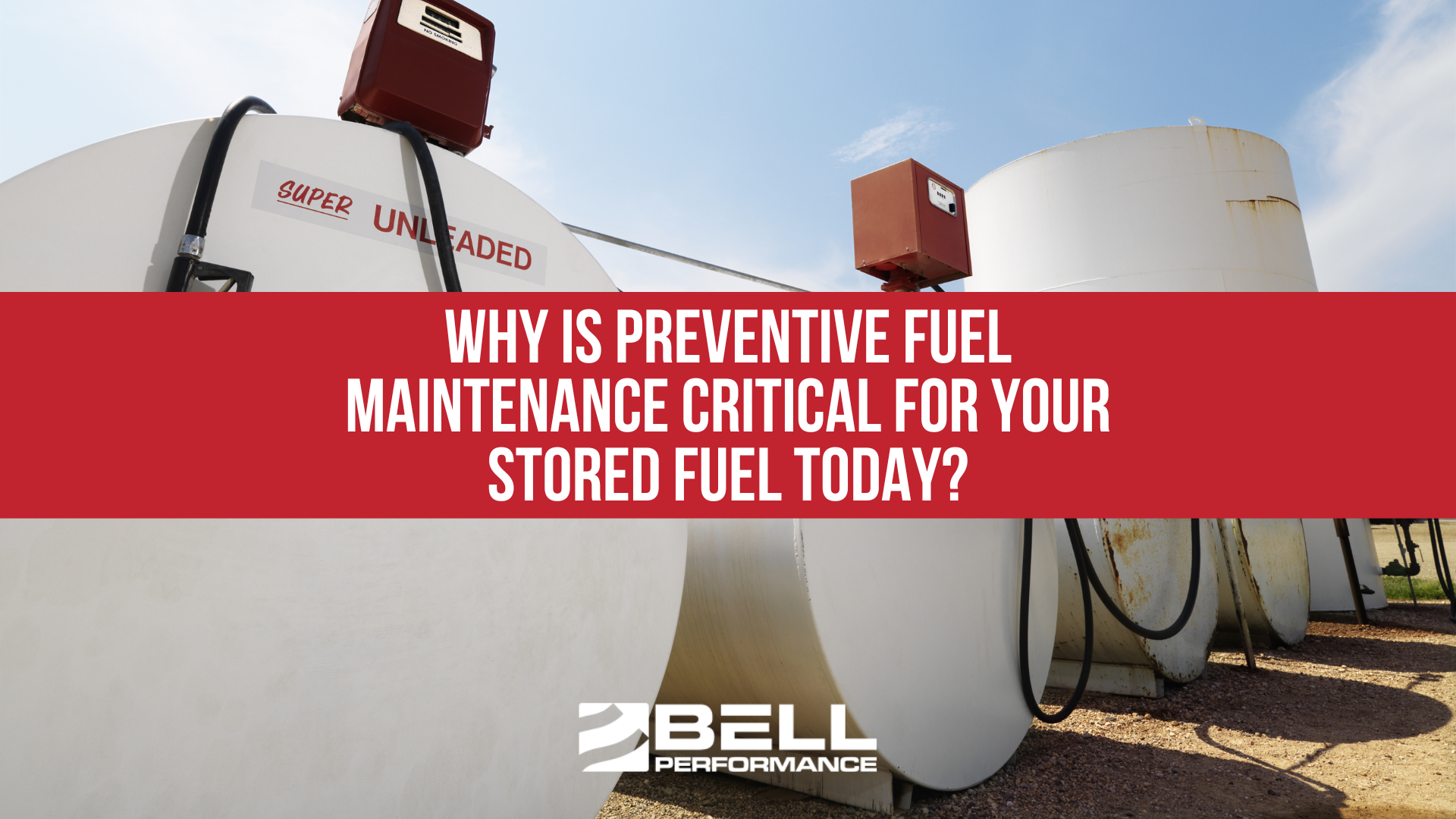Why Is Preventive Fuel Maintenance Critical for Your Stored Fuel Today?
The concept of preventive maintenance isn't new—we see it everywhere in our daily lives. You change your car's oil before it breaks down. You...
3 min read
Erik Bjornstad : Aug 20 2025

September really means one thing for emergency managers across the Southeast—hurricane season isn't over, and the worst storms often come when you least expect them. While most facilities have generator testing schedules and emergency protocols in place, there's a critical piece that gets overlooked until it's too late: the fuel sitting in the backup systems that makes those systems go.
Here's what keeps fuel experts awake at night: perfectly maintained generators that they thought were perfectly maintained, instead failing because nobody thought about what's happening inside the fuel tank.
During Hurricane Sandy, NYU Langone Medical Center had to evacuate critical care patients at the worst possible time - not because their generators were broken, but because contaminated fuel killed the backup power when it mattered most.
The 2003 Northeast blackout revealed an even more sobering reality—20% of emergency backup systems failed due to fuel problems, not mechanical issues. That's one in five generators sitting idle while 50 million people need power.
We all know what happened during Hurricane Katrina. A key difference then was that a number of the high-profile failures, like Memorial Medical Center and Tulane University Hospital, weren't caused by bad fuel itself, but because they ran out of the good fuel they had and couldn't get any more.
Which means the lesson there is the importance of making sure all the backup fuel your facility has is in good shape. There's no guarantee you can get more when you need it.
Emergency fuel storage creates the perfect storm for problems. Fuel sits for months, sometimes years, waiting for that critical moment. During this time, two silent threats are working against you:
Water finds its way into every fuel system through condensation, especially in humid climates. Even a small amount creates the perfect breeding ground for microbes that feed on fuel, producing acids that corrode your system from the inside out. These microbes don't just damage fuel—they create sludge that clogs filters and fuel lines right when you need them most.
Modern diesel fuel of the ultra-low sulfur variety degrades faster than older formulations. The regulatory requirements for the fuel that help the environment also remove natural preservatives, meaning today's fuel has a shorter shelf life than what your maintenance schedules might assume.
Check and test your stored fuel now, not when a storm is three days out. Microbial test strips need several days to show results, and if you find fuel contamination, you'll need time to treat it properly. Schedule fuel deliveries to top off tanks—fuel suppliers get overwhelmed as storms approach. And make sure you have multiple layers of fuel delivery contract redundancy with multiple suppliers so you're fully covered. Never rely on just one supplier in an emergency.
If tests show microbial growth, treat with an EPA-registered biocide immediately. Don't wait. Run generators after treatment to circulate the treated fuel through the entire system. Check and drain any water from tank bottoms.
This is your final generator test window. Run each unit for at least 30 minutes under load. Top off fuel in all essential vehicles and portable equipment. If you're still getting fuel deliveries at this point, you're cutting it too close.
Your fuel work should be done. Focus on securing equipment and finalizing other preparations.
The facilities that never have fuel emergencies follow a simple routine during calm periods. They treat stored fuel with biocide every quarter, not just when problems appear. It's preventive medicine for your fuel system. A typical treatment costs about $100-150 for a 5,000-gallon tank—far less than emergency fuel replacement or generator repairs. More importantly, it prevents the kind of failures that make headlines for all the wrong reasons.
Water management goes beyond just draining tanks. Install water-detecting paste on your tank gauging stick to monitor water levels monthly. Most fuel problems start with just a few gallons of water that nobody noticed until it became a much bigger issue.
The best emergency managers work with fuel suppliers who understand these challenges. Your supplier should be testing your fuel regularly, not just delivering it. They should know the difference between fuel stabilizers and biocides, and when to use each. If your current supplier can't have this conversation with you, find one who can.
Emergency fuel management isn't just about having fuel—it's about having fuel that works when everything else is going wrong.
Your emergency plan probably covers evacuation routes, communication protocols, and resource allocation. But if the fuel powering your backup systems fails, none of those other plans matter. The good news is that fuel failures are completely preventable with the right approach and timing.
Don't let contaminated fuel be the reason your facility makes the evening news. Start your hurricane season fuel prep now, while you still have time to do it right.
Contact Bell Performance at 407-831-5021 to speak with a fuel expert about protecting your emergency fuel systems. Because when disaster strikes, your backup power should be the one thing you don't have to worry about.

The concept of preventive maintenance isn't new—we see it everywhere in our daily lives. You change your car's oil before it breaks down. You...
Service companies working with government installations, hospitals, data centers, and emergency response facilities - the places we call "mission...
September marks that familiar shift when fuel distributors across the northern regions start fielding the calls. Fleet managers asking about anti-gel...